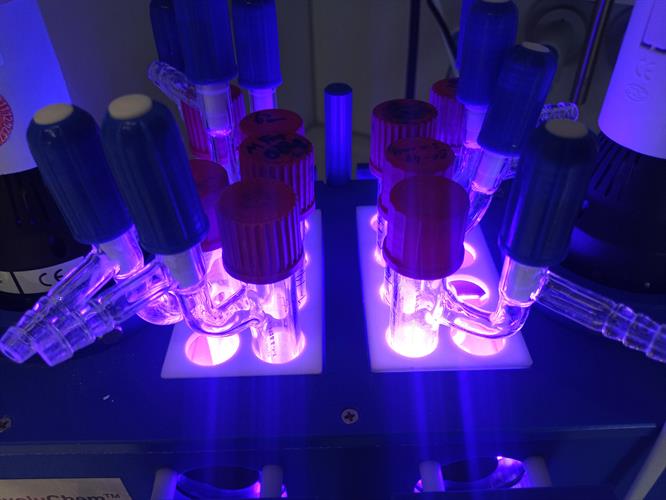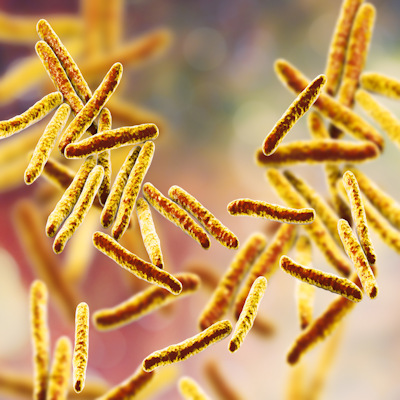March 26, 2021 -- Medicinal chemists have succeeded in converting several classes of flat nitrogen-containing molecules into 3D structures that could form the basis for new drug candidates. The methods, published in Science on March 26, detail over 100 examples of the broad applicability of overcoming the conversion barrier through light-mediated energy transfer.
Converting flat molecular structures, such as arenes (aromatic hydrocarbons) to 3D structures can improve a molecule's properties and result in higher efficacy and success rates for therapeutic drugs based on the molecules.
Cycloaddition reactions -- a chemical reaction where two or more unsaturated molecules (or parts of the same molecule) combine to form a cyclic product -- are one of the most useful synthetic chemistry tools. Traditional substrates of these reactions include unsaturated hydrocarbons, such as 1,3-butadienes, alkenes, and alkynes.
In contrast, unsaturated quinoline, isoquinoline, and quinaldine (nitrogen-containing molecules with diene or alkene subunits) are rarely used due to inherent low reactivity of aromatic systems and selectivity challenges associated with dearomative cycloaddition (DAC) reactions.
For aromatic systems, the energy barrier that inhibits cycloaddition cannot be overcome even with the application of heat, as attempted with previous methods. Therefore, in the current study, chemists explored the possibility of overcoming this barrier through light-mediated energy transfer. The team included Frank Glorius, PhD, professor of organic chemistry at the University of Münster, Germany, and his colleagues, M. Kevin Brown, PhD, associate professor at Indiana University Bloomington and Kendall Houk, PhD, a professor at the University of California, Los Angeles.

"The motif of using light energy to build more complex, chemical structures is also found in nature," Glorius explained in a statement. "Just as plants use light in photosynthesis to synthesize sugar molecules from the simple building blocks carbon dioxide and water, we use light-mediated energy transfer to produce complex, three-dimensional target molecules from flat basic structures."
In the energy transfer approach, flat molecules can be selectively excited using irradiation of blue light-emitting diodes to a higher-energy triple state (electronic state in which two electrons in different molecular orbitals have parallel spins). Through this process the kinetic barrier for the cycloaddition is compressed compared to thermally controlled methods.
Importantly, the unconventional triplet state intermediate of the reaction leads to chemoselectivity (preference to react with specific atom or group in a molecule), regioselectivity (preference of chemical bonding or breaking in one direction), and diastereoselectivities (preference of diasteromers). The result is the possibility to create novel synthetic 3D structures that have been previously inaccessible.
Opening the door for new pharmaceutical applications
Through light-mediated energy transfer, the scientists showed that quinoline, isoquinoline, and quinaldine can be coupled with a wide range of structurally diverse alkenes to obtain novel 3D drug candidates or their backbones. They also demonstrated a variety of innovative transformations for the further processing of these synthesized backbones to produce biologically active compounds.
"We hope that this discovery will provide new impetus in the development of novel medical agents and will also be applied and further investigated in an interdisciplinary manner," explained Jiajia Ma of the University of Münster.
The starting molecules used in the study are all commercially available at low costs and are easy to produce, according to the authors. This makes the method practical and easy to use in existing laboratories.
Intersection of experimental and computational chemistry
A unique feature of the study was the confirmation of the reaction mechanism through the use of computational chemistry. Houk and Shuming Chen, PhD, professor at Oberlin College conducted detailed computer-aided modeling of the reaction. They were able to show how these reactions work and why they occur very selectively.
Specifically, hydrogen bonding or Lewis acid-base interaction of the starting material in the energy transfer method produce an intermediate that is then selectively excited to a triplet state by an energy transfer process. This results in a highly reactive biradical intermediate that crosses an alkene in a regio- and steroselective fashion to produce DAC products.
"This study is a prime example of the synergy of experimental and computational theoretical chemistry," said Chen.
"Our detailed mechanistic elucidation and understanding of reactivity concepts will enable scientists to develop complementary methods and to use what we learned to design more efficient synthetic routes in the future," Houk concluded.
Do you have a unique perspective on your research related to synthetic chemistry or drug discovery? Contact the editor today to learn more.
Copyright © 2021 scienceboard.net








